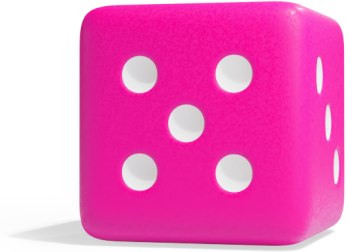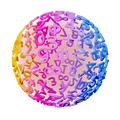9th Grade
How Do You Find the n-th Term in a Geometric Sequence?
07_AI_levels
DetailsActivity
{
"voice_prompt": "",
"manuscript": {
"title": {
"text": "How Do You Find the n-th Term in a Geometric Sequence?",
"audio": "How do you find the n-th term in a geometric sequence?"
},
"description": {
"text": "You can find any term in a geometric sequence by multiplying the starting value by the ratio raised to a power.",
"audio": "You can find any term in a geometric sequence by multiplying the starting value by the ratio raised to a power."
},
"scenes": [
{
"text": "In a geometric sequence, each term is made by multiplying the previous one by the same number. For example, here you keep multiplying by 2 each time. That number is called the ratio. Instead of building the sequence one step at a time, you can jump straight to the term you want by using a formula.",
"latex": "3 , \\ 6 , \\ 12 , \\ 24 , \\ 48 , \\ldots"
},
{
"text": "To find the n-th term, a n, you take the starting value, a, one, and multiply it by the ratio raised to the power of n minus 1.",
"latex": "a_n = a_1 \\times r^{n - 1}"
},
{
"text": "Let’s try an example. You have a geometric sequence that starts at 3 and the ratio is 2. What is the 5th term?",
"latex": "a_1 = 3, \\quad r = 2, \\quad n = 5"
},
{
"text": "Use the formula. a, one equals 3 and r equals 2. Since it's the fifth term, you must raise the ratio to the power of 5 minus 1 which is 4. That gives 3 times 16, which is 48.",
"latex": "a_5 = 3 \\times 2^4 = 3 \\times 16 = 48"
},
{
"text": "So the 5th term in this geometric sequence is 48. You didn’t have to write out all the earlier terms to get it.",
"latex": "a_5 = 48"
},
{
"text": "Let’s look at another example. This time, you’re not given the starting value or the ratio directly. All you have is the sequence: 64, 32, 16, 8, 4 and so on.",
"latex": "64 , \\ 32 , \\ 16 , \\ 8 , \\ 4 , \\ldots"
},
{
"text": "To check if it’s geometric, divide each term by the one before. Thirty-two divided by sixty-four is one half. Sixteen divided by thirty-two is also one half, and so on. So the ratio is one half.",
"latex": "\\dfrac{32}{64} = \\dfrac{1}{2} , \\quad \\dfrac{16}{32} = \\dfrac{1}{2} , \\quad \\dfrac{8}{16} = \\dfrac{1}{2} , \\quad \\dfrac{4}{8} = \\dfrac{1}{2}"
},
{
"text": "Now suppose you want to find the 10th term in this sequence. It’s not easy to count your way there, so this is a perfect time to use the formula. a, one is 64 and the ratio is one half. To find the 10th term, raise the ratio to the power of 9. That gives 64 times one over 512, which is one eighth.",
"latex": "a_{10} = 64 \\times \\left(\\frac{1}{2}\\right)^9 = 64 \\times \\frac{1}{512} = \\frac{1}{8}"
}
],
"outro": {
"text": "You can find any term in a geometric sequence by multiplying the starting value by the ratio raised to a power.",
"audio": "You can find any term in a geometric sequence by multiplying the starting value by the ratio raised to a power."
}
}
}




















